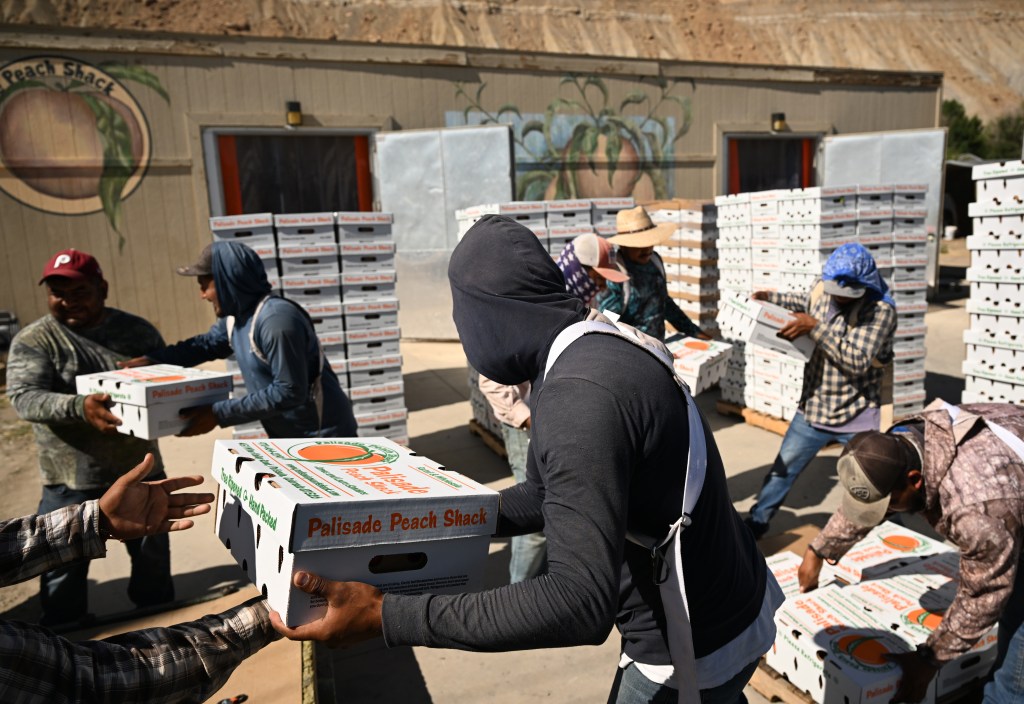The food that Americans sit down to eat at their dining room table has, over the decades, increasingly been picked, sorted and shipped by seasonal foreign workers.
These laborers — the majority of whom come from Central and South America — stay in the United States for roughly half the year as part of the federal H-2A visa program, a temporary work arrangement offered by American employers who cannot find domestic workers to do the job.
Workers earn money during the growing season and go home when the season concludes. Many return to the same employer year after year, recruiting their family members and friends to work alongside them.
Unenforced Labor
In this three-part report, The Denver Post details abuses of foreign workers in Colorado’s agricultural supply chain — and a lack of action from state and federal regulators.
The program has exploded in recent years as American employers say they cannot find local workers to do this grueling agricultural work.
In 2023, the U.S. Department of Labor approved hiring 378,000 workers — more than double the number of H-2A workers approved in 2016 and seven times the number in 2005, according to U.S. Department of Agriculture data. Roughly 10% of U.S. agricultural workers are employed with H-2A visas.
Colorado, similarly, has seen a drastic uptick in foreign labor.
Centennial State employers requested just under 4,000 workers in 2023, an increase from fewer than 1,200 workers a decade ago, according to Colorado Department of Labor and Employment records. In 2001, just 246 people were approved to work here on H-2A visas.
The Immigration and Nationality Act of 1952 established the H-2 nonimmigrant visa program, though the current version can be traced to the 1980s.
In 1986, the Reagan administration separated the program into two groups — H-2A visas would cover agricultural workers and H-2B dealt with seasonal non-agricultural employment. The following year, the State Department issued 44 H-2A visas.
The origins of temporary foreign labor in the United States, however, date back to the controversial Bracero Program enacted in 1942.
An executive order by President Franklin D. Roosevelt, signed during World War II, permitted millions of Mexican men — braceros, or laborers — to work legally in the U.S. on short-term contracts.
The series of agreements between Mexico and the U.S. government were designed to address a severe labor shortage due to the conscription of more than 16 million Americans to fight in the war.
Between 1942 and 1964, the final year of the Bracero Program, more than 4 million Mexican men came to work in U.S. agriculture and on railroads, primarily in California and Texas.
“The braceros converted the agricultural fields of America into the most productive on the planet,” University of Northern Colorado researchers wrote in a migratory labor project.
Despite a set of protocols designed to prevent mistreatment, the foreign laborers experienced discrimination, surcharges for room and board, deducted pay and exposure to deadly chemicals, according to the Library of Congress.
“The Latin-American migratory worker going into west Texas is regarded as a necessary evil,” Pauline R. Kibbe wrote in her 1946 book, “The Latin Americans in Texas.” “Judging by the treatment that has been accorded him in that section of the state, one might assume that he is not a human being at all, but a species of farm implement that comes mysteriously and spontaneously into being coincident with the maturing of cotton, that requires no upkeep or special consideration during the period of its usefulness, needs no protection from the elements, and when the crop has been harvested, vanishes into the limbo of forgotten things — until the next harvest season rolls around.
“He has no past, no future, only a brief and anonymous present,” Kibbe wrote.
A former Department of Labor official, Lee G. Williams, described the Bracero Program as a system of “legalized slavery.”
“In practice,” the Southern Poverty Law Center wrote in a 2013 report titled “Close to Slavery,” “there is little difference between the Bracero Program of yesterday and today’s H-2 guestworker program.”
Get more Colorado news by signing up for our daily Your Morning Dozen email newsletter.
Originally Published:
